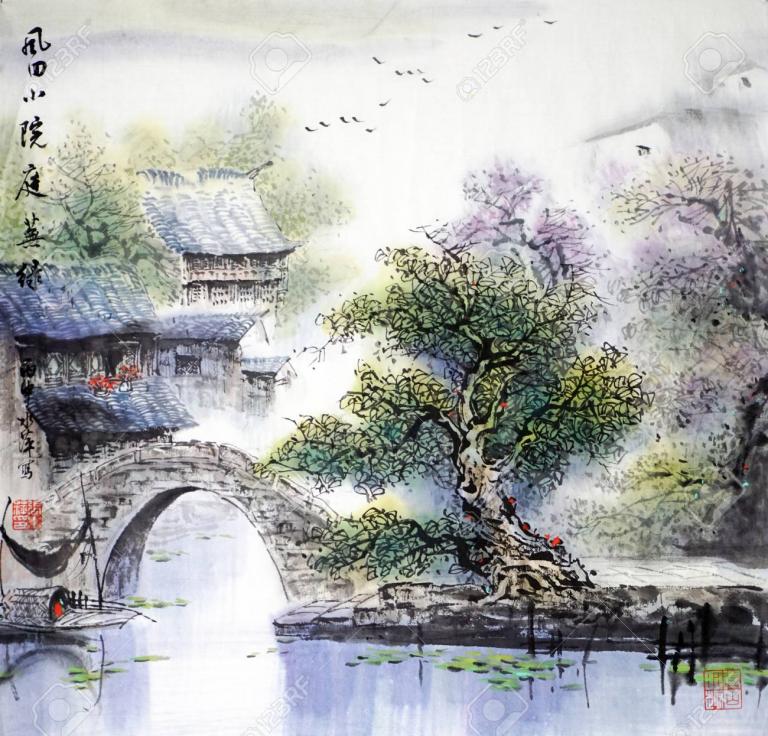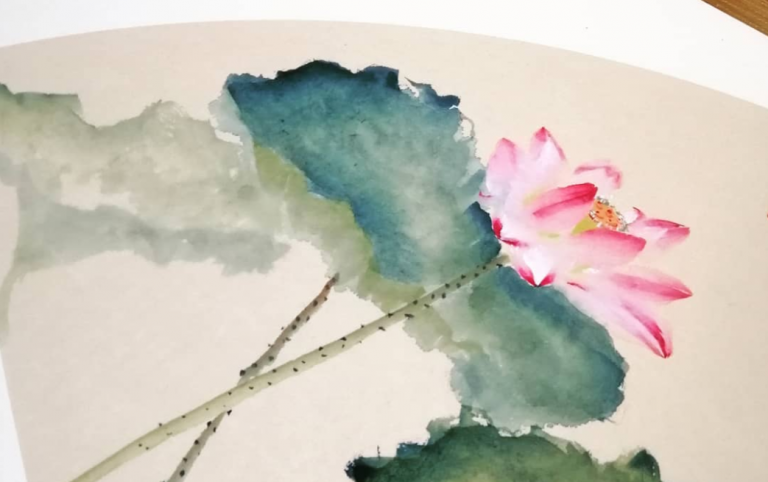Chinese Painting
3 min readTraditional Chinese painting uses brushes to apply ink wash and pigment to thin silk or paper, which is then mounted on scrolls. This form of painting attaches the highest importance to fluidity and expressiveness of line, and is deeply influenced by calligraphy. This is because both art forms utilize essentially the same tools as well as similar brushstrokes. Traditional Chinese artists use minimal line to portray their subjects. Representing form is merely the basis for revealing essence. Even today, students of traditional Chinese painting practice brushstrokes as part of their training.

Although early Chinese painting was primarily religiously oriented, it was imbued with reallife atmosphere and generally used people as its subject material. Starting in the 7th century AD, during the Tang Dynasty (618-907 AD), Chinese painting started to be influenced byphilosophical thinking. Advocating harmony between Humanity and Nature, the new school of painting called for breaking the bonds of concrete imagery, and rather using symbolic themes to represent the interior world. As a result, subject matter gradually changed from religious figures to natural scenery, including”mountain and water”landscape painting an “bird and flower”genres.
Along with this change in thematic content, an increasing number of artists emerged who were outstanding in both painting and calligraphy. The brushwork inscriptions that started to appear on paintings at this time were an expression of the merging of the two art forms. These inscriptions described the theme of the painting, using highly poetic language and beautiful calligraphy to deepen the appeal of the work.
Classical Chinese artists believed that paintings should not be limited by the actual color of their subject matter. For instance, bamboo could be portrayed using only black ink. As are sult, the use of color decreased and painting solely with ink became increasingly prevalent.
Ink wash painting made full use of the tinting and bleeding effects that could be achieved with brush, ink, and water, transcending the limitations of realistic color and offering artists greater creative freedom.
Following the Tang-Song period(618-1276 AD),”mountain and water”landscapes became one of the primary genres of Chinese painting. Unlike Western painting, traditional Chinese painting does not employ a single focal point. Rather, most Chinese landscapes utilize a shift ing perspective to portray a continuous sweep of connected views, such as mountains and rivers or a long city street. These paintings, mounted on long horizontal or vertical scrolls, allow the viewer to appreciate panoramic vistas that cannot be seen from a single perspective.

Contemporary Chinese painting, influenced by the ideas and techniques of Western art, gave rise to reforms in traditional Chinese painting and brought a new infusion of vitality to the genre. The works of artist Xu Beihong (189 5-19 53 AD) are representative of this trend. The emergence of new schools of realist painting, deeply imbued with the spirit of popular life, also exerted a strong influence on traditional Chinese painting. As these transformations occurred, Chinese artists drew from the combined spirits of Chinese and Western art to create new styles of oil painting that preserve the unique features of traditional Chinese art. The delicate waterscapes of contemporary painter Wu Guanzhong(1919-2010 AD) are a case in point, bringing a vision of classical beauty to the eyes of the modern viewer.








